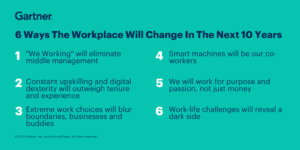developments in Experiential design
Providing users with intuitive and user-friendly experiences is becoming more important than ever for brands. As the experience design industry grows, it’s crucial that designers understand what’s currently driving it and what to look out for in the future. In 2023, we’ll see an increased emphasis on accessibility, the use of voice interfaces, and a shift towards more collaborative systems.
Virtual and augmented reality: These technologies offer innovative ways for users to interact with digital content and will continue to create new opportunities for Versions designing immersive experiences. They’re also being used to enhance existing products such as software, websites, apps, and hardware.

Naturalized user interfaces: Many consumer applications now have naturalized UIs that connect humans to technology through voice, touch, haptic sensations, and facial recognition—without the need for special headsets. This trend is transforming business, healthcare, education, and even manufacturing in unique and exciting ways.
What are the future trends and developments in Experiential design?
A growing interest in experiential design: Immersive designs are being used to create new cultural and community connections in sports, entertainment, hospitality, and retail. This approach blurs the lines between physical and digital storytelling, creating an opportunity for brands to provide customers with a holistic experience.
Increased focus on accessibility: The popularity of voice assistants has led to a greater emphasis on making interfaces more accessible to people with visual, hearing, and motor impairments. This will require designers to create interactions that work seamlessly with AI-powered services and that adapt to users’ individual preferences and needs.
More collaboration and shared spaces: We’re seeing an increase in the use of distributed networks, blockchain technology, and sharing economies to support collaboration and provide a sense of community within an organization or project. This movement is bringing a more communal and egalitarian approach to work, which will influence how we develop tools and apps in the future.
The use of bold typography: As human attention spans have decreased, it’s become necessary for web and app designers to capture audiences’ attention quickly and clearly. This is why we’re seeing more and more companies opting for larger, bolder fonts.
Micro animations: This design trend focuses on fluid or organic shapes rather than straight lines, and it is often combined with flat colors and gradients to create a more dynamic vision of the product. For example, this yoga clothing store uses micro animations to show shoppers how their clothes fit on real bodies.
Conversational UI and chatbots: These new UX trends are a response to the increasing demand for messaging apps and voice assistants. They make the interface more intuitive and user-friendly, and they also allow developers to deliver 24×7 customer service efficiently.
The UX industry is constantly evolving, and it’s important for designers to keep up with the latest trends in order to stay ahead of the competition. At Tenacity Works, we’re here to help you navigate the landscape and create intuitive, user-friendly experiences that will set you apart from the competition. Get in touch with us to learn more about how we can help you with your next project.

